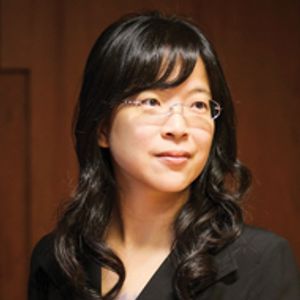The future of pharmaceutical patent litigation
This is an Insight article, written by a selected partner as part of IAM's co-published content. Read more on Insight
On 20 August 2019 the newly amended patent linkage system was officially implemented in Taiwan, changing the practice of the biopharmaceutical industry – one of the biggest patent litigation growth areas in Taiwan.
The patent linkage system in Taiwan was introduced by an amendment to the Pharmaceutical Affairs Act on 29 December 2017, which adjudicates patent validity and infringement issues before the marketing of a generic or biosimilar product. Like the Hatch-Waxman system in the United States, patent linkage in Taiwan permits marketing approval of follow-on biopharmaceutical products only on condition that the patents of the originator’s product have expired. The follow-on applicant is required to certify that:
- the product has not been patented;
- the patent has already expired;
- the follow-on biopharmaceutical product will not go on the market until the patent has expired; or
- the patent is not infringed and/or is invalid.
Unlike the Hatch-Waxman system, which applies to chemical drugs, and for which protein drugs are not included, patent linkage in Taiwan applies to both generic drugs and biosimilars. The length of stay of the marketing approval and marketing exclusivity available to the generic drug or biosimilar applicant are different. The time gap between each step of the patent linkage system and the patent litigation that may be initiated makes the marketing plan of a biopharmaceutical product a decision that requires both legal and business intelligence.
Patent linkage in Taiwan
The amended Pharmaceutical Affairs Act includes a new Chapter 4-1 to cover the patent linkage of drugs. Under the new law, a new drug applicant is obliged to list patents relevant to its drugs. The follow-on applicant will notify the Ministry of Health and Welfare (MOHW) and the new drug marketing approval holder (and the patentee or exclusive of the patent if they are different legal entities) that the proposed biopharmaceutical product does not infringe the patents already listed. For a certification claiming that the patent is not infringed or is invalid (a Paragraph 4 certification), the timing regarding patent linkage is 20 days, 45 days and 12 months.
The generic drug applicant should inform the MOHW and the new drug marketing approval holder (and the patentee or exclusive licensee of the patent if they are different legal entities) about its claim of non-infringement or invalidity and provide evidence thereof within 20 days after the marketing approval application is ready to be reviewed. The patentee or exclusive licensee of the patent (usually the marketing approval holder, but sometimes different legal entities because of group-wide arrangements) can file a patent litigation within 45 days of being notified by the generic drug applicant. If the patent litigation is filed within 45 days, the generic drug will still be under review but will not be approved by the Taiwan Food and Drug Administration (TFDA) for up to 12 months. The first generic drug applicant of a completed application with Paragraph 4 certification will be given 12 months of marketing exclusivity.
Patent listing
Patent listing must be made by the new drug marketing approval holder through the TFDA online database. If the marketing approval holder is not the patentee, the approval holder will have the consent of the patentee or the exclusive licensee of the patent before making the patent listing. Patent listing will be made within 45 days of receiving the marketing approval from the TFDA.
For a patent which has not been granted or is granted after marketing approval is received, said patent will be listed within 45 days of its issuance. Any changes to listed information, such as patent term extension approvals, patent rights transfers, patent expiration, among others, will be made within 45 days of the date on which the event occurred.
Eligible patents
Not all patents related to the new drug are eligible for the patent linkage system. Eligible patents are limited to:
- substances;
- compositions or formulations; and
- pharmaceutical use.
Information regarding eligible patents – including patent number, expiration date, name of patentee or exclusive licensee, among others – must be specified. If the patentee or exclusive licensee is not domiciled in Taiwan, an agent will be appointed and the information of the agent identified. For pharmaceutical use patents, the patent number and the specific claims covering the stated pharmaceutical use will be identified.
Patent linkage
Generic drug applicants must certify that:
- the proposed product has not been listed with patents – marketing approval will be issued;
- the patent has already expired – marketing approval will be issued;
- the marketing approval of the generic drug is issued after the patent expires – marketing approval will be held until the listed patents expire; and
- the patent is not infringed or is invalid (a Paragraph 4 certification) – marketing approval will depend on the response of the listed rights holder.
Generic drug applicants that submit a Paragraph 4 certification must notify the MOHW and the new drug marketing approval of its Paragraph 4 certification and evidence within 20 days of receiving notification from the MOHW that the generic drug application is complete and ready for review. The patentee has 45 days to decide whether to file a patent litigation against the generic drug applicant. If a patent litigation is filed, the issuance of the generic drug marketing approval will be stayed for up to 12 months unless a judgment favourable to the generic drug applicant is rendered before the 12-month period expires. If no patent litigation is filed, the generic drug application will be examined and the marketing approval will be issued after examination.
At one time there were uncertainties as to whether the patent linkage system also applied to biosimilars. Since the Pharmaceutical Affairs Act does not distinguish chemical drugs from protein drugs, both are collectively mentioned as a ‘new drug’ in the act.
Table 1. US Hatch-Waxman system compared to Taiwan’s patent linkage system

The newly amended Pharmaceutical Affairs Act also includes a separate obligation of notification with regard to settlement agreements and licence agreements. For any settlement agreement or other agreement involving the manufacture, sale and marketing exclusivity period of a drug, the parties must notify the TFDA within 20 days of the agreement. If the licence agreement involves reverse payment, the parties should also notify the Fair Trade Commission. Disclosure of the full context of the licence agreement is not necessary. The notification should include the required basic information, such as the parties, purpose of the agreement, effective date, drug approval number or the application number related to the agreement, and payment interest related matters, among others.
Comment
Experience and knowledge of patent ligation in Taiwan is more important than ever as a result of the patent linkage system. The reason is clear: timing is of the essence.
In Taiwan, patent litigation is reviewed by the IP Court – a specialised court staffed with experienced judges and technical examiners who have served previously as examination officers at the Taiwan Intellectual Property Office. The IP Court has jurisdiction over the first and second instances of patent litigation. Arguments regarding patent validity issues, as well as patent infringement issues, will be reviewed and determined by the IP Court. It typically takes between one and two years to conclude the first instance of patent litigation. Remedies available to the prevailing party include monetary damages awards and non-monetary awards (eg, permanent injunction that prohibits the infringing party from manufacturing and selling the infringing products).
Considering competition advantages in the market, new drug patentees need to know how to manage a patent portfolio, list patents and use legal actions available in Taiwan to maintain leading status where possible. Generic drug applicants need to know how to file a Paragraph 4 certification and to prepare the potential patent litigation to expedite the whole proceeding where possible. Timing should be taken into consideration for strategic marketing planning for both sides. The timeline and relevant schedule should be drawn, discussed and reviewed carefully by both the marketing and legal teams. Even if the patentee and the generic drug manufacturer plan to reach an agreement, the notification obligation and the impact on competition will be considered for the purpose of regulatory compliance. Advice from experienced local counsel will be key to a satisfactory performance in this regard.







